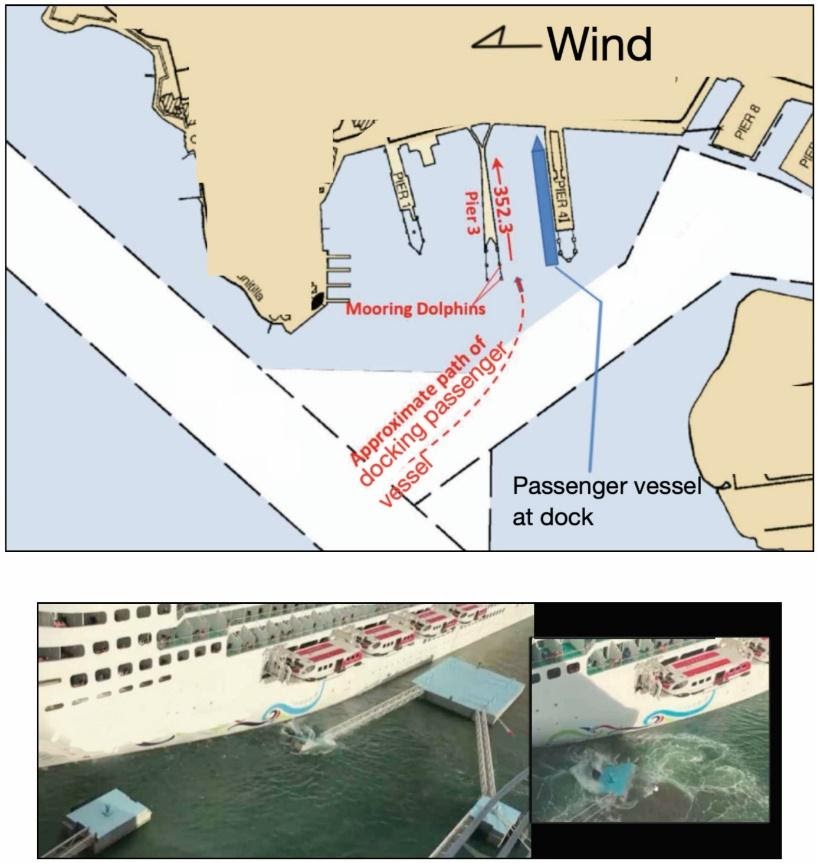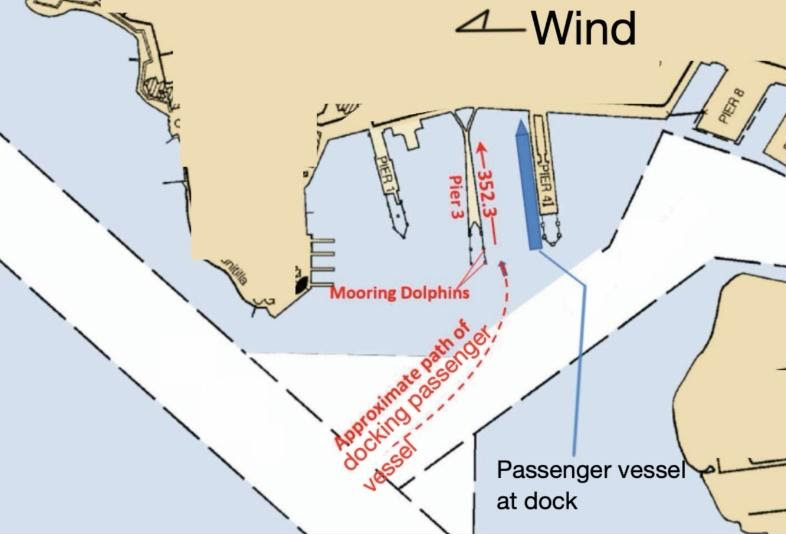A master and pilot need to have a mutually understood docking plan. The Nautical Institute discusses a case in which master and pilot were not “on the same page” resulting in USD 3.7 million in damages to ship and shore infrastructure.
The Nautical Institute gathers reports of maritime accidents and near-misses. It then publishes these so-called Mars Reports (anonymously) to prevent other accidents from happening. A summary of this incident:
A passenger vessel was under pilotage and the bridge team were preparing to dock the vessel at pier 3, port side to, on a heading of about 352°. Another passenger vessel was already berthed at a parallel dock on the starboard side. Wind was fresh at about 25 knots from the east and the pilot advised the master that they would need to stay well to windward for the approach. The vessel’s port shaft was inoperable at the time.
Two tugs were made fast on the starboard bow and quarter. As the passenger ship started the turn to port its speed was less than 3 knots and the master, as planned, took the con for the docking. As the turn progressed, the pilot told the master he would order the tugs to pull away from the dock to slow the approach.
The master was using bow and stern thrusters to manoeuvre into the space, as well as helm and the starboard engine, but sometimes these movements were in contradiction to the tug’s efforts. Within about nine minutes of the master taking the con the port side of the vessel touched the extended mooring dolphins at the south end of the pier and the catwalks that were in place there collapsed into the water.
Approximately 45 minutes later the vessel was safely docked without further incident. Although no injuries had been suffered, damages to ship and shore infrastructure were estimated at USD 3.7 million.
Investigation findings
The official report stated that the major contributing factor to this accident was a lack of communication and co-ordination between the master and pilot.
Advice from The Nautical Institute
- Difficult, tight manoeuvres are hard to accomplish at the best of times, but especially when combined with a turning component. When conditions permit, vessel movements should be kept as lateral as possible.
- Although both the pilot and the master were under the impression they had a clear, mutually understood docking plan, in reality they did not.

Mars Reports
This accident was covered in the Mars Reports, originally published as Mars 202056, that are part of Report Number 336. A selection of this Report has also been published in SWZ|Maritime’s November 2020 issue. The Nautical Institute compiles these reports to help prevent maritime accidents. That is why they are also published on SWZ|Maritime’s website.
More reports are needed to keep the scheme interesting and informative. All reports are read only by the Mars coordinator and are treated in the strictest confidence. To submit a report, please use the Mars report form.








